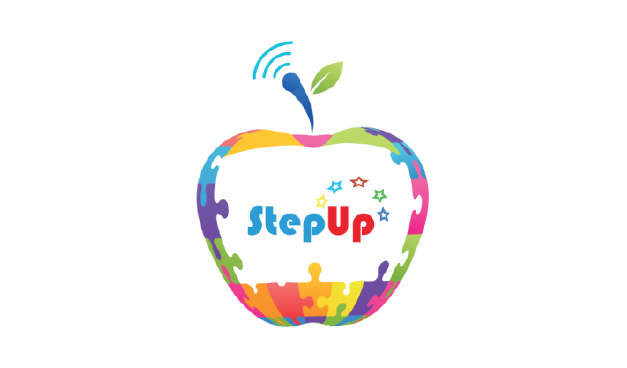Space Performance Task
Source #1
To the Moon
by Michael Signal
(1) On April 12, 1960, Yuri Gagarin became the first man in space. It was the second time that the Soviet Union had beaten the United States into Space. The Soviet Union had launched the first satellite, Sputnik, into orbit three years earlier. Americans had been beaten to the punch, twice. They didn’t want to be beaten again. No one was more determined for an American space victory than President John F. Kennedy. In 1961, he promised to land an American astronaut on the moon and return him safely to Earth. It would take the most powerful engine ever created to make that promise come true, but on July 20, 1969, American astronauts walked on the moon. They returned safely to Earth on July 24.
(2) The Soviet Union doesn’t exist today. Most of what used to be the Soviet Union is modern-day Russia, but in the 1960s, Americans saw the Soviet Union as a huge threat. For decades, the United States and the Soviet Union were locked against each other in the Cold War. There was no fighting in the Cold War, but there was a lot of showing off. Each side had to prove that it was more powerful than the other. The Soviet launch of the first satellite and the first person into space seemed to prove that their space program was the best in the world. People of the United States did not want the Soviet Union to be best at anything. America had to do something big. The Soviet Union had only sent people and things into orbit around the Earth. President Kennedy made a gamble. If the United States really could put a man on the moon, it would prove that the American space program was the best. But it would also be a huge defeat if the United States failed.
(3) The Soviet Union and the United States had both launched people and satellites into space, but they returned quickly to Earth or stayed in orbit around the planet. Sending men to the moon would be a much more difficult task. The first rockets that blasted into space were not nearly powerful enough to reach the moon. The United States needed to build a new rocket. A team of brilliant scientists designed the Saturn V rocket. It stood over 360 feet tall and carried about one million gallons of explosive fuel. The Saturn V’s F-1 rocket engines are the most power rocket engines ever produced. It was the only machine that would be able to place American astronauts on the moon.
(4) It took four days for Neil Armstrong, Buzz Aldrin, and Michael Collins to reach the moon. But they did reach the moon, and they returned to Earth safely. The 1969 moon landing put the United States ahead of the Soviet Union for good in their Cold War battles over space. That victory was due in part to the determination of an American president and the American people, and in part to the mighty Saturn V rocket.
Source # 2
Spacewalk
by Michael Signal
(1) A Soviet cosmonaut became the first man in space in 1961. Yuri Gagarin’s space flight was dangerous, but his Vostok 1 spacecraft protected him from the hazards of space. Almost five years later, another Soviet cosmonaut would become the first man in space, outside of a spacecraft. Alexei Leonov performed the first spacewalk in 1965. Leonov’s spacewalk proved that a person could survive in space, outside of a spacecraft. Today astronauts and cosmonauts use spacewalks to perform all sorts of tasks.
(2) The first Americans walked in space a few months after Leonov did. Americans and Soviets had proven that they had the technology to keep a man safe, even if he exited his spacecraft. This was no simple task. There is no air to breathe in space, so a space suit must have its own air supply. There are other dangers too. Temperatures can be less than -100 degrees Fahrenheit, or they can soar to 500 degrees Fahrenheit. Without a space suit, an astronaut would freeze to death, or bake to a crisp. Another danger comes from cosmic radiation. The Sun and other celestial objects emit radiation that can be very harmful to humans. On Earth, the atmosphere blocks much of the dangerous radiation. Floating outside of a spaceship, an astronaut’s only protection comes from a space suit. It is like a mobile, personal habitat.
(3) Today, astronauts have to perform repair missions and close inspections that cannot be done from inside of a spaceship. Some of the most useful spacewalks repaired the Hubble Space Telescope. In 1990, NASA launched the Hubble into Space. It was supposed to be the most powerful telescope ever launched into orbit, but it was broken. During several spacewalks, astronauts repaired the Hubble’s faulty mirror. After the repairs, the telescope worked better than scientists had hoped. The Hubble success proved that astronauts could safely perform complicated tasks during a spacewalk.
(4) It takes a lot of technology to keep a person safe in space. It takes even more to keep someone safe in space during a spacewalk. Space suits have proven that they can do more than just keep people safe. They give astronauts a portable air supply, regulate temperature, and allow them to complete complex tasks, all while floating through space. Spacesuits are essential mission equipment for any astronaut, and spacewalks are essential activities on most space missions.
Part A
PART 1
Use information from “To the Moon” and “Spacewalk” to create a timeline. Drag the statements of the events into the boxes below and place them in chronological order beginning with Box 1.
Box 1
Part B
Source # 1 discusses the first moon walk by Americans. Explain how the information in Source # 2 adds to the reader’s understanding of that event. Give two details from Source # 2 to support your explanation.
Part C
Which source would be the most helpful in understanding the realities of how astronauts are able to be active in space outside of their space vehicle? Explain why this source is the most helpful. Use two details from the source to support your answer.
Space Performance Task
Source #1
To the Moon
by Michael Signal
(1) On April 12, 1960, Yuri Gagarin became the first man in space. It was the second time that the Soviet Union had beaten the United States into Space. The Soviet Union had launched the first satellite, Sputnik, into orbit three years earlier. Americans had been beaten to the punch, twice. They didn’t want to be beaten again. No one was more determined for an American space victory than President John F. Kennedy. In 1961, he promised to land an American astronaut on the moon and return him safely to Earth. It would take the most powerful engine ever created to make that promise come true, but on July 20, 1969, American astronauts walked on the moon. They returned safely to Earth on July 24.
(2) The Soviet Union doesn’t exist today. Most of what used to be the Soviet Union is modern-day Russia, but in the 1960s, Americans saw the Soviet Union as a huge threat. For decades, the United States and the Soviet Union were locked against each other in the Cold War. There was no fighting in the Cold War, but there was a lot of showing off. Each side had to prove that it was more powerful than the other. The Soviet launch of the first satellite and the first person into space seemed to prove that their space program was the best in the world. People of the United States did not want the Soviet Union to be best at anything. America had to do something big. The Soviet Union had only sent people and things into orbit around the Earth. President Kennedy made a gamble. If the United States really could put a man on the moon, it would prove that the American space program was the best. But it would also be a huge defeat if the United States failed.
(3) The Soviet Union and the United States had both launched people and satellites into space, but they returned quickly to Earth or stayed in orbit around the planet. Sending men to the moon would be a much more difficult task. The first rockets that blasted into space were not nearly powerful enough to reach the moon. The United States needed to build a new rocket. A team of brilliant scientists designed the Saturn V rocket. It stood over 360 feet tall and carried about one million gallons of explosive fuel. The Saturn V’s F-1 rocket engines are the most power rocket engines ever produced. It was the only machine that would be able to place American astronauts on the moon.
(4) It took four days for Neil Armstrong, Buzz Aldrin, and Michael Collins to reach the moon. But they did reach the moon, and they returned to Earth safely. The 1969 moon landing put the United States ahead of the Soviet Union for good in their Cold War battles over space. That victory was due in part to the determination of an American president and the American people, and in part to the mighty Saturn V rocket.
Source # 2
Spacewalk
by Michael Signal
(1) A Soviet cosmonaut became the first man in space in 1961. Yuri Gagarin’s space flight was dangerous, but his Vostok 1 spacecraft protected him from the hazards of space. Almost five years later, another Soviet cosmonaut would become the first man in space, outside of a spacecraft. Alexei Leonov performed the first spacewalk in 1965. Leonov’s spacewalk proved that a person could survive in space, outside of a spacecraft. Today astronauts and cosmonauts use spacewalks to perform all sorts of tasks.
(2) The first Americans walked in space a few months after Leonov did. Americans and Soviets had proven that they had the technology to keep a man safe, even if he exited his spacecraft. This was no simple task. There is no air to breathe in space, so a space suit must have its own air supply. There are other dangers too. Temperatures can be less than -100 degrees Fahrenheit, or they can soar to 500 degrees Fahrenheit. Without a space suit, an astronaut would freeze to death, or bake to a crisp. Another danger comes from cosmic radiation. The Sun and other celestial objects emit radiation that can be very harmful to humans. On Earth, the atmosphere blocks much of the dangerous radiation. Floating outside of a spaceship, an astronaut’s only protection comes from a space suit. It is like a mobile, personal habitat.
(3) Today, astronauts have to perform repair missions and close inspections that cannot be done from inside of a spaceship. Some of the most useful spacewalks repaired the Hubble Space Telescope. In 1990, NASA launched the Hubble into Space. It was supposed to be the most powerful telescope ever launched into orbit, but it was broken. During several spacewalks, astronauts repaired the Hubble’s faulty mirror. After the repairs, the telescope worked better than scientists had hoped. The Hubble success proved that astronauts could safely perform complicated tasks during a spacewalk.
(4) It takes a lot of technology to keep a person safe in space. It takes even more to keep someone safe in space during a spacewalk. Space suits have proven that they can do more than just keep people safe. They give astronauts a portable air supply, regulate temperature, and allow them to complete complex tasks, all while floating through space. Spacesuits are essential mission equipment for any astronaut, and spacewalks are essential activities on most space missions.
An astronaut, recently visited your school to explain the history of space travel. While she spent quite a bit of time talking about the race to put a man on the moon and how spacewalks occur. You and your classmates really enjoy the presentation and get excited about the space program. Your teacher gives you two passages to read, “Spacewalk” which explain how spacewalks work, and a passage that describes the race to the moon called “To the Moon”
After you have reviewed these sources, you will answer some questions. Briefly scan the sources and the three questions that follow. Then, go back and read the sources carefully so you will have the information you will need to answer the questions and complete your research. You may use scratch paper to take notes.
In Part 2, you will write an informative paper using the information you have read.
PART 2
Space Informational Task
You will now review your notes and sources, and plan, draft, revise, and edit your writing. You may use your notes and go back to the sources. Now read your assignment and the information about how your writing will be scored; then begin your work.
Your Assignment:
Your class is creating a new magazine about different careers. Your teacher asks you to think about everything you learned, from the speaker and the passages you read, regarding the history of space exploration and having a job as an astronaut. She wants you to write an article for the new magazine that describes what a day in the life of an astronaut during the space race, being sure to use the terms and ideas as mentioned in the passages.
REMEMBER: A well-written informational article:
- Has a clear main idea
- Is well-organized and stays on the topic
- Has an introduction and conclusion
- Uses transitions
- Uses details or facts from the sources to support your main idea
- Develops ideas clearly
- Uses clear language
- Follows rules of writing (spelling, punctuation, and grammar usage)
Now, begin your work on your informational article. Manage your time carefully so that you can
- Plan your article
- Write your article.
- Revise and edit the final draft of your article.
Word-processing tools and spell check are available to you.
For Part 2, you are being asked to write an article that is several paragraphs long. Type your response in the box below. The box will get bigger as you type.
Remember to check your notes and your prewriting/planning as you write and then revise and edit your informational article.
 Online Program
Online Program


 Writing Standards (W.4.8)
Writing Standards (W.4.8)  Incomplete Answer
Incomplete Answer